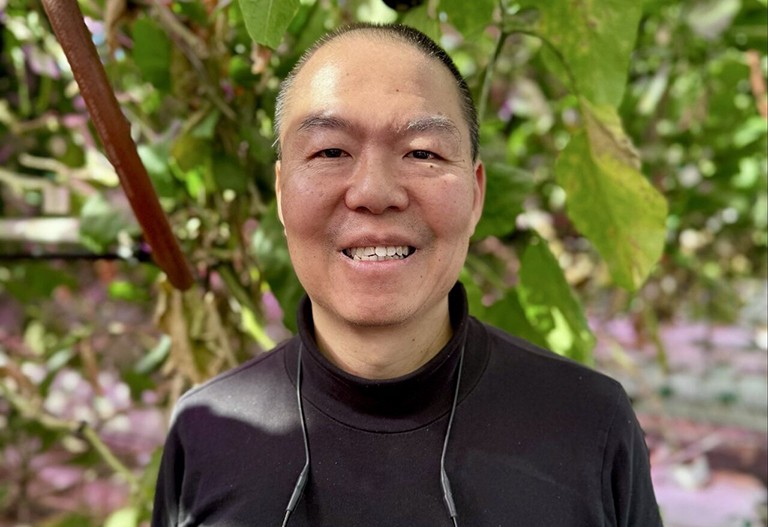 Associate professor Bruno Lee visits Montreal greenhouse Lufa Farms.
Associate professor Bruno Lee visits Montreal greenhouse Lufa Farms.Rooftop greenhouses promise fresh, local food, greener urban spaces and a more sustainable lifestyle. Yet despite growing interest, significant barriers remain - from structural challenges to energy inefficiencies - that prevent these green roofs from reaching their full potential.
Bruno Lee, associate professor in the Department of Building, Civil, and Environmental Engineering, is leading research to make rooftop farms more practical, efficient and integrated with the buildings beneath them.
"Our goal is to understand how to incorporate greenhouses into buildings in a way that benefits both people and the environment," he says.
Reducing energy use while optimizing efficiency
Many urban rooftops, particularly those of Montreal warehouses, are structurally capable of supporting greenhouses. But, few take advantage of the opportunity. Lee aims to provide a blueprint for building safe, energy-efficient and sustainable rooftop farms.
A Concordia graduate who returned in 2014 after completing his PhD in the Netherlands, Lee had the opportunity to closely observe Dutch advanced greenhouse systems. There, he gained insight into energy-efficient measures and coatings that optimize light intake and support plant growth at different stages, inspiring him to pursue similar research in Montreal.
In April, he was awarded Impact funds through Volt-Age, Concordia's electrification research program, for his "Closing the Water-Energy-Food-Loop" project. The initiative focusses on aquaponic greenhouses. This farming method utilizes wastes from fish as fertilizers for plants, giving plants a fuller, more natural taste.
Unlike conventional greenhouses, which often operate independently, his research focuses on integrating the greenhouse with the building itself.
"Greenhouses need carbon dioxide, exactly what we exhaust from the buildings. ," he explains. "Most systems don't connect the two. By integrating them, we can reduce energy use, optimize plant growth and improve overall efficiency."
A scalable solution
The potential impact is wide-ranging. Integrated rooftop greenhouses can reduce energy use, lower carbon footprints and strengthen urban food resilience. By modelling energy and plant growth together, Lee's team provides a scalable solution for cities looking to balance density with sustainability.
His work also extends beyond urban centres. Lee's team is exploring applications for smaller towns and northern communities, where fresh produce is often limited and expensive.
By situating greenhouses next to existing community buildings, he says they plan to adapt building-integrated principles to local contexts.
"Fresh food isn't always easy to get in these areas," Lee says. "We want to make it accessible, sustainable and resilient."
Learn more about Concordia's Volt-Age electrification research program.






